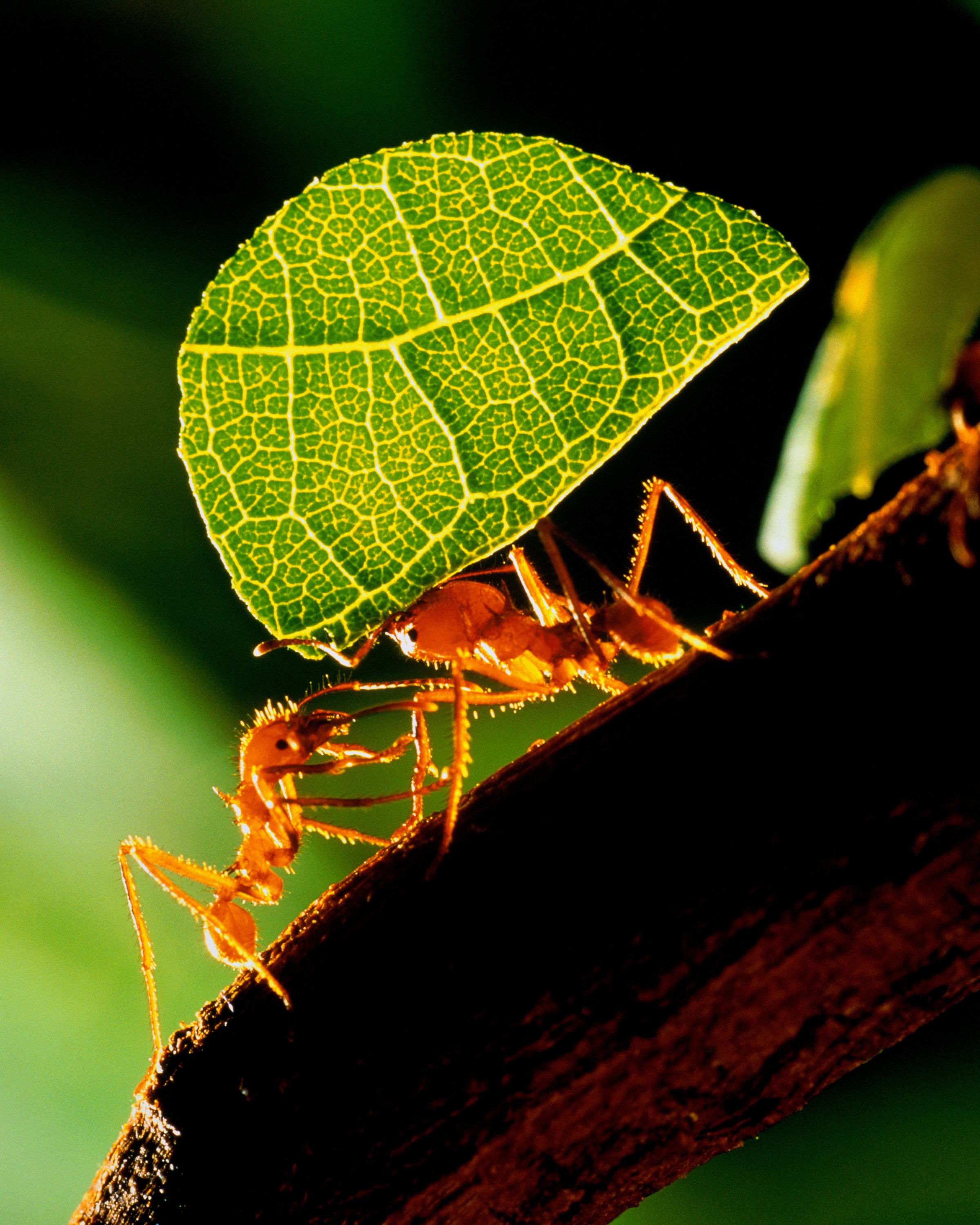
If you’re reading this, you’re probably not an ant. In fact, it is exceedingly likely that you’re human. Perhaps you’re a construction worker, laying bricks for a new high-rise building downtown. Or maybe you’re a parent, engaged in a near futile struggle to lay your howling baby to rest each night. You could even be an office worker, toiling away each day for the benefit of a faceless corporation while struggling to even find the time to enjoy Marvel’s Ant-Man in theaters.
But what if you were an ant? What could social insect living do for you?
Every individual worker in an ant colony is part of a collective—a female dominated society with one or more reproductive individuals (usually queens, occasionally egg-laying workers) at the helm. Having mated with a tragically short-lived male, the queen stores up his sperm in a special pouch, a spermatheca, and turns her energy to the business of laying eggs. The first-gen workers survive on further eggs laid by the queen until they’re old enough to forage themselves. From there, the colony goes from strength to strength. Workers are continuously produced in overlapping generations. They divide up the chores of finding food, nest construction, defense, and raising future offspring. Lest this seem a mundane existence, the employment of this cooperative strategy is astonishingly successful. A single colony can contain millions of ants. Globally, there are at least 20 quadrillion individuals. Ant biomass exceeds that of all wild birds and mammals combined. The numbers don’t lie—ants are doing something right, and whatever it is, they are doing it together.
Read More: Your Ant Farm Is Smarter Than Google
Imagine you are an Oecophylla Weaver Ant. Living a tropical life in the trees, your whole community would share in the task of building homes, warehouses, and working facilities for each other. Standing side by side, your colony would utilize their collective powers to bind leaves together with larval silk, forming large dome-like constructions in the trees. Each member of your society would treat every other member as their sibling, even you. Any unsafe conditions at the construction site—like a threatening ant-eating tree frog—would be immediately understood as a threat to everyone and dealt with accordingly. No need to wait years for your complaint to be resolved by a negligent company executive.
Now take a moment to think even smaller, small enough for your family to occupy a hollowed-out acorn. As a Temnothorax Acorn Ant, you would never raise a child alone. Of course, you would also be unlikely to raise a child genetically your own! Working within the colony, you care for offspring that are your sisters, carefully tending the eggs laid by your mother as they grow first into larvae and then pupae. The continuous production of eggs by the queen means that multiple generations live together, all pitching in to help. Labor is subdivided according to who is best suited to a task with roles switching with age. Tasks might involve bringing larvae food, keeping pupae clean, or ensuring no harm befalls newly laid eggs. Gone is the individual expectation that the reproductive individual is also the sole provider of all caring duties. Instead, roles are taken up inside and outside the home by a range of extended family, then rotated according to the most suitable individual for the task at hand.
If you were an Atta Leafcutter Ant, you would share in the fruits of your foliage-foraging labor. Day after day, you trek to and from a nearby tree, hoisting your leafy loot up high as you follow an extensive pheromone trail back to your cavernous underground nest. Although you would not break into a sweat like some mammal, you may acutely feel the oppressive rays of the hot tropical sun. Despite such conditions, you do not experience alienation from your labor—quite the opposite. The leaves you carry are ground into mulch, which fertilizes mutualistic fungal gardens and provides sustenance for the whole colony. This food, in addition to other liquid resources recovered outside the nest, may be stored in the crop of numerous workers who distribute the food among nest members through “oral-oral trophallaxis”—the refined process of spitting into each others’ mouths. The food you so strenuously worked to obtain disappears not into the stockpiles of strangers but into the bellies of your siblings and yourself.
Alas, you are neither a Weaver Ant, nor an Acorn Ant, nor a Leafcutter Ant, nor an ant of any kind. You appear to be a human. Accordingly, you lack the innate, communal drive of your insect counterparts. Yet unlike ants, you do possess the capacity to imagine.
Imagine, then, a human society that is just a little more ant-like than your own. What do you see?
More Must-Reads from TIME
- Inside Elon Musk’s War on Washington
- Meet the 2025 Women of the Year
- The Harsh Truth About Disability Inclusion
- Why Do More Young Adults Have Cancer?
- Colman Domingo Leads With Radical Love
- How to Get Better at Doing Things Alone
- Cecily Strong on Goober the Clown
- Column: The Rise of America’s Broligarchy
Contact us at letters@time.com